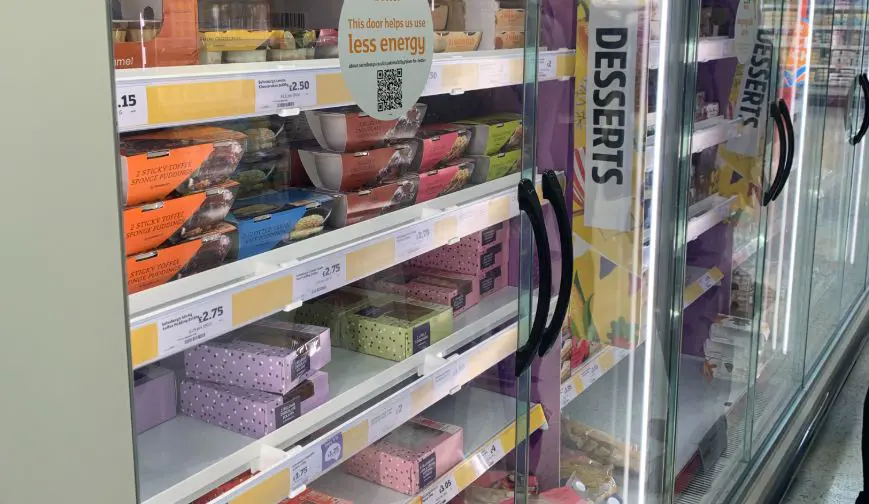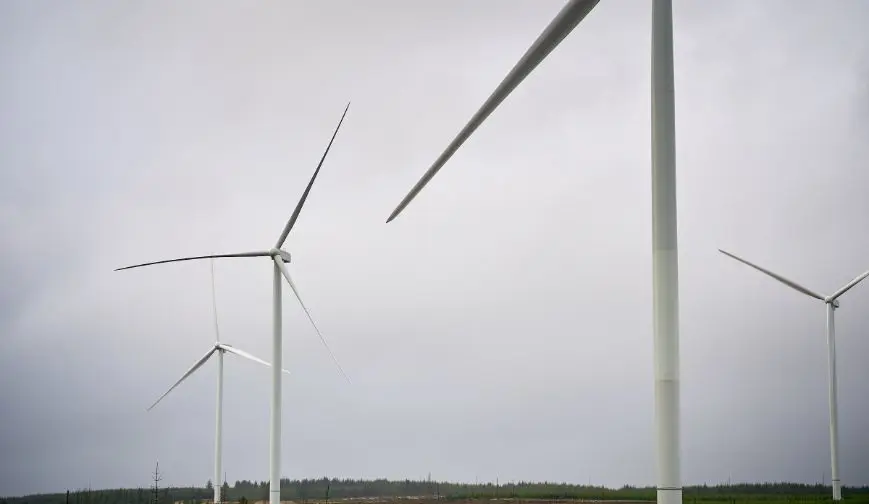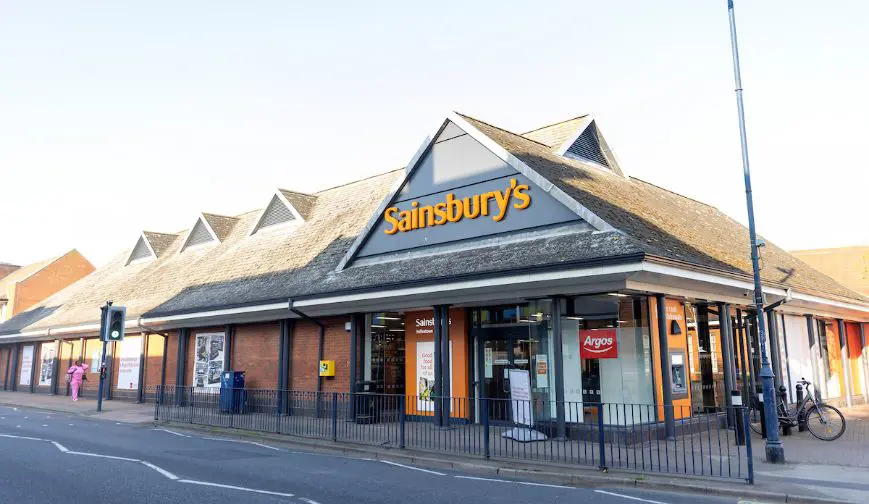Achieve net zero in our own operations by 2035
Globally, the food sector contributes to around one third of all Greenhouse gas emissions, so as a major food retailer, we know that we have a responsibility to mitigate our impact on the planet - reducing the emissions that our direct operations generate is a key part of this.
To grow our business sustainably, we are cutting carbon and maximising energy efficiency - leveraging innovation and technology to ensure that we can serve our customers with fewer emissions.
Our ambition
Our progress so far
| Baseline | Performance | Target | ||
| 2018/19 | 2023/24 FY | 2024/25 FY | 2035/36 | |
| Absolute GHG emissions within our own operations (tC02e) | 949,744 | 458,793 | 448,734 | Net Zero |
| 2019/20 | 2023/24 FY | 2023/24 FY | 2035/36 FY | |
| Electricity which comes from renewable sources (%) | 17% | 100% | 100% | 100% |
For further information on our performance, please visit our Reports & Policies page for our Plan for Better report or read our full sustainability results in our Plan for Better Databook
As a signatory to the SBTi Business Ambition for 1.5 degrees, we have committed to reaching net zero value chain emissions by no later than 2050, which includes the emissions associated to the products we sell to our customers, in line with the highest ambition of the Paris Agreement to limit global warming to 1.5°C. This builds on our existing science-based targets to become net zero across our operations by no later than 2035 and our alignment to a 1.5°C trajectory across all scopes and timeframes.
We have been working to mitigate our climate impact for a number of years and have reduced our Scope 1 and 2 carbon emissions by 52.8 per cent since our baseline, despite growing as an organisation. In order to align with a 1.5 degree pathway, we have developed a roadmap to 2035 to reduce our emissions, with near term clear milestones defined in a 3-year emissions reduction plan.
Key achievements
reduction in our absolute greenhouse gas emissions from our own operations, versus our 2018/19 baseline
of our electricity sourcing comes from wind energy
renewable electricity since 2022
in our 2024 CDP climate change disclosure for the 11th year running
Our approach
We are accelerating the electrification of our operations through targeted investment, innovation and long-term planning.
Our approach includes the rollout of solar PV systems, next-generation LED lighting, and Refrigeration Integrated Heating and Cooling (RIHC) systems that eliminate the need for natural gas heating. We continue to replace refrigeration systems using HFC gases with more efficient CO₂-based alternatives, aligned with equipment lifecycles.
We’ve fully mapped our estate to identify priority sites for investment and are applying learnings from new store developments to retrofit existing locations.
Engineering innovation is central to our strategy, with trials in enhanced metering, remote monitoring, thermal energy storage, and aerodynamic design to reduce energy loss and recover heat.
To support investment planning, we conduct detailed energy benchmarking and site surveys, helping us identify opportunities to reduce consumption, emissions and costs including those related to the Climate Change Levy (CCL).
Since 2022/23, our entire estate has been powered by 100% renewable electricity, verified by ERM CVS and supported by third-party partner South Pole. This includes a combination of on-site solar and wind generation, as well as certified renewable electricity from the UK grid.
While we’ve already transitioned to 100% renewable electricity, our focus remains on reducing overall consumption through energy efficiency. We’re investing in next-generation LED lighting, engineering innovation, and technologies like AirDoors to reduce air infiltration in stores. We also continue to expand on-site solar PV installations across our estate.
To further increase our renewable capacity, we’ve secured long-term Power Purchase Agreements with new-to-planet wind farms, including Pines Burn Wind Farm in the Scottish Borders, which now supplies around 3% of our annual electricity needs. Wind energy now accounts for over 30% of our electricity sourcing.
We’re also exploring renewable alternatives in transport. From March 2025, 30 of our heavy goods vehicles will be powered by 100% biomethane a renewable gas derived from food waste supporting our transition to low-carbon logistics.
We have committed to investing £1billion to achieve Net Zero and much of the delivery of this is through our Graphite investment programme. Funding innovations focusing on energy efficiency and carbon reduction projects specific to Sainsbury's.
In 2024, we invested £19 million through our Graphite programme now in its 13th year focusing on energy efficiency, renewable energy, and the removal of high-impact refrigerants.
We are committed to transitioning our vehicle fleet to alternative fuels by 2035, with a focus on reducing emissions across our logistics and delivery operations.
To support this transition, we are investing in renewable fuel alternatives and electrification.
We continue to trial electric vehicles in our Grocery Online (GOL) operations, with three stores now operating fully electric fleets supported by dedicated charging infrastructure. At our Christchurch store, we are piloting the use of Smart Charge customer car park chargers to power our GOL fleet, eliminating the need for separate charging units.
Across our depot network, we’ve installed electric plug points at ten sites, enabling our entire fleet of 450 rigid vehicles to charge their refrigeration units using 100% renewable electricity while stationary.
From March 2025, 30 of our heavy goods vehicles (HGVs) will be powered by 100% biomethane a renewable gas produced from the anaerobic digestion of unsold food. We are also exploring opportunities to convert operational food waste into biofuels, further reducing our reliance on diesel.
We are also participating in the eFREIGHT 2030 consortium the UK Government’s Zero emission HGV and infrastructure demonstrator programme, which aims to kickstart the uptake of zero emissions heavy goods vehicles. This allows us to test and trial electric HGVs and charging solutions, helping shape the future of low-carbon freight.
Working in collaboration
We are working with WRAP and WWF to develop and deliver an ambitious climate action programme for the grocery retail sector, which will set out the high-impact actions we need to collectively take to halve emissions, by 2030.
We also working closely with Imperial College, to explore engineering solutions that support energy efficiency and carbon reduction. This includes short-term studies and a longer-term project to assess climate resilience and the impact extreme weather can have across our estate.
All of our data for reducing our Scope 1, 2 and 3 emissions, cotton, waste and water are third-party assured.
AirDoors, helping to reduce store energy use
Sainsbury’s is working to control air infiltration within our stores through the installation of AirDoors and the modelling of lobby design. The Formula One-inspired AirDoor technology uses a series of high-powered fans to create an air barrier at the entrance to the stores. This prevents the loss of conditioned air and reduces the requirement for space heating, improving energy efficiency and mitigating heat loss to create a more stable internal temperature, leading to lower energy consumption.

Eighth wind farm now helping to power Sainsbury’s
We added our eighth wind farm Power Purchase Agreement to our portfolio this year, significantly increasing our use of renewable electricity and aligning with our goal to reduce Scope 2 emissions. Pines Burn Wind Farm in Scotland provides 100 per cent of electricity generated to Sainsbury’s. The new wind farm, featuring seven turbines, adds 33.6 MW of renewable capacity to the grid and is expected to generate 92,000 MWh of electricity annually, covering approximately 3 per cent of Sainsbury's annual electricity needs. Wind energy makes up over 30 per cent of our electricity sourcing, with the remainder from other 100 per cent renewable sources.

Innovating to reduce food waste and carbon
We announced that from March 2025, we would be using food waste to power 30 delivery trucks at our Emerald Park distribution centre in Bristol, in a UK-first, fully circular trial alongside our food processing partner RenEco. RenEco works with us to convert surplus food that’s unfit for human consumption into biogas via anaerobic digestion. For the trial, the biogas will be used to create a 100 per cent liquid biomethane fuel that comes directly from our supply chain and can power our HGVs. As an alternative to diesel, using biomethane will save over 3,000 tonnes of carbon dioxide per year, with a tonne of food waste producing enough fuel for around 250 miles of HGV transport – the equivalent of over 150 litres of diesel.
The circular system will also allow for more precise tracking of our GHG emissions and help support our Scope 1 and 2 targets.



